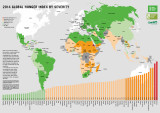Development pathways and land management in Uganda
This paper investigates the patterns and determinants of change in livelihood strategies ("development pathways" ), land management practices, agricultural productivity, resource and human welfare conditions in Uganda since 1990, based upon a community- level survey conducted in 107 villages.












